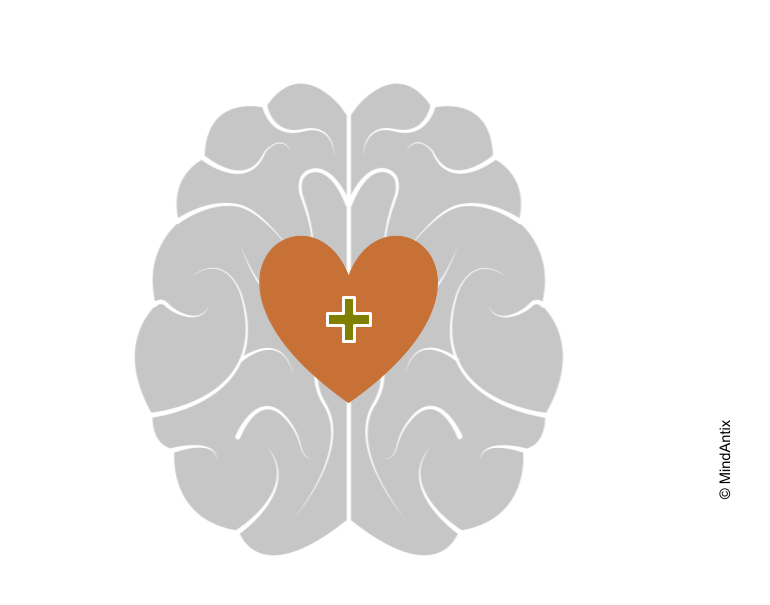May is Mental Health Awareness Month. This year mental health is of particular concern among students due to the impact of Covid-19 and school closures. CDC data found that mental health related emergency visits among K-12 students increased by 25% – 31% last year. Several survey results show that student mental health issues have exacerbated during the pandemic. In one survey, over half of teen students indicated that they faced mental health challenges like anxiety and trouble concentrating, and a third of the parents indicated that their child’s emotional and mental health had become worse during the pandemic.
These sobering statistics were further compounded by the fact that many approaches to mitigating mental health issues like healthy social interactions or building trusted relationships were harder to do with school closures.
When social connection is not easy, individual practices can help. Teaching students mindfulness meditation has shown to reduce anxiety and stress. However, in this article we will look at a somewhat less known way to improve mental wellbeing – engaging in creative problem solving and building a creativity mindset.
Stress and Coping Skills
Creative thinking skills allow students to approach daily challenges more effectively. In a study of 3rd to 6th grade students, researchers found that students who scored higher on creative thinking, had better coping skills in the school environment and exhibited fewer disruptive behaviors.
As the researchers explained, “The ability of children to keep an open mind and not judge or reach conclusions about people, situations or problems too impulsively may be a significant factor in successfully managing the stresses of daily life. Also, the ability of children to maintain flexibility of thought and to generate ideas that are not only fluent in number but original may contribute significantly to successful coping.”
In addition, the study also noted that students may respond more readily to creative thinking opportunities than training workshops on stress management and social skills.
Other research has shown that creative people are more comfortable being on the “edge of chaos”, are better at reframing challenges into opportunities, and less likely to withdraw from college or fail academically.
In other words, teaching children creative thinking has the secondary benefit of building better coping and stress management skills, that can last well into adulthood.
Interpersonal Skills
In a study to understand the relationship between creativity and interpersonal problem solving, researchers tracked K-8 students over a period of two years. They found that creative thinking, and in particular ideational fluency – the ability to come up with several ideas – was significantly correlated to different aspects of interpersonal problem solving.
One potential reason for this is that both creativity and interpersonal problem solving involves related underlying skills – coming up with several solutions, evaluating the impact of ideas and flexibly adapting to different situations to produce novel outcomes.
Another study showed that more creative children displayed less aggression than less creative children. Research also seems to suggest that creativity is related to successful aging and longevity.
Higher Values
Abraham Maslow studied creative people and talked about self-actualizing (SA) creativeness which came from possessing an “openness to experience” attitude, and displayed itself in everyday life. SA creative people were not just eminent people who produced groundbreaking work, but also regular people who approached everyday situations with creativity. As he explained, “I learned from her and others like her that a first-rate soup is better than a second-rate painting, and that, generally, cooking or parenthood or making a home could be creative while poetry need not be; it could be uncreative.”
More interestingly, Maslow found that SA creative people seemed happier, more at peace and more fulfilled. They were more motivated with higher values like truth goodness and beauty, and focused more on larger endeavors.
These qualities are good for individual growth but are much more important for solving larger societal issues and driving social progress.
Teaching Creativity
Often the most effective interventions are those that don’t even appear to be so. Building more creative thinking skills has a spillover effect into daily life. Creative people are able to use their cognitive style in a flexible and open manner to solve problems and cope with daily life stresses. Teaching creativity has the potential to develop more well-rounded and well-adjusted citizens. Unfortunately, despite being a critical 21st century skill, creativity isn’t often taught often or encouraged in schools.
As Dr. Richards, an advocate for teaching more creativity, laments in Everyday Creativity, “How odd it may seem, considering the benefits, that we do not stress everyday creativity more in schools, homes, businesses, healthcare settings, senior centers, and centers for personal growth and development. Why, one may ask again, is our creativity so hidden or diminished (or underrecognized, underdeveloped, and underrewarded)?”
This article first appeared on edCircuit.

